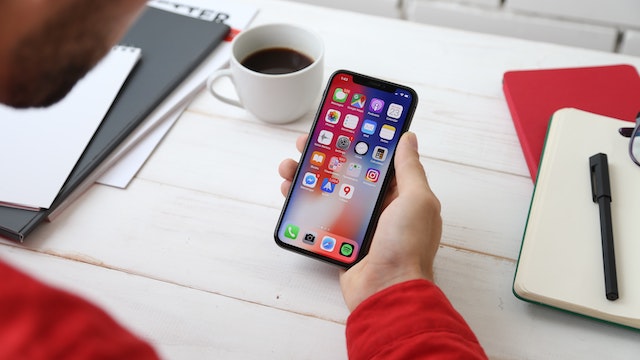A mobile application, often mentioned as a mobile app or just an app, is a computer program or software application created to operate on a mobile device (a phone, or a tablet, or a smartwatch). Mobile apps are indisputably significant nowadays. They can assist with email access, calendar, and contact databases.
Still, all good, useful, and sort of addictive things find their way to users’ hearts and devices easily. The general need for apps caused their prompt expansion into other domains. Popular apps can include GPS and location-based services, order-tracking, mobile games, automation, or purchases. Countless mobile apps are available to the public; some of them require the users to pay, while others are free of charge.
Users can find apps on application distribution platforms such as the App Store (iOS) or Google Play Store.
Mobile applications usually represent a contrast to desktop applications, which run on desktop computers, and web applications, which commonly run in mobile web browsers.
iOS stands for Apple’s mobile operating system for its iPhone, iPad, iPod touch, or Apple TV. To put this simply – an iOS app is a software application developed for usage on Apple’s iOS-powered iPhone devices.
The entire story commenced in 2005 when Steve Jobs started to plan the iPhone. His own words included the phrase – “Shrink the Mac or enlarge the iPod.” As quirky as it might sound, this idea was followed by a contest that led to Scott Forstall’s victory and the creation of an iPhone OS. The rest is history.
January 2020 brought some excellent news for Apple’s originators. Their products have officially reached 1.5 billion active users. This time last year, Apple had 1.4 billion active devices, 900 million of which were iPhones.
The world has bitten the Apple, and it tastes like an enormous revenue.

Tale as old as modern time – which mobile operating system is better? iOS and Android users both have substantial grounds to support their choices. Both mobile operating systems have their perks, and both have taken over features from each other over the years. On the other hand, let’s take a peek at it from the engineers’ perspective. The entire app development process differs according to the operating system.
Mobile apps that are running on Android are developed primarily in Java, which is currently one of the most prevalent programming languages in the world. Still, Java requires a lot of coding, which is why there is a more simplistic and concise alternative to it. Another frequently used language for Android developers is Kotlin. Apple’s native mobile app development language Objective-C was one of the first programming languages and was beneficial for creating apps on several devices. A more modern programming language alternative for iOS developers is Swift. It was launched in 2014 and has basically substituted Objective-C.
As for programming languages, for building iOS apps, developers can choose between Objective-C and Swift. Objective-C provides object-oriented capabilities and a dynamic runtime environment. However, Swift is considered to be more functional and includes code that’s less error-prone. With Swift, developers can compile and fix the errors while coding, which can’t be done with Objective–C. Swift works quicker in comparison to Objective–C when it comes to bug testing.
If your team goes for Swift for their iOS app, they’d need to be familiar with Apple Xcode as the toolkit for developing a native app. Apple Xcode enables developers to create mobile and desktop applications. Its usage has many advantages, such as integrated support for Git repositories, a graphical editor for UI, debugging tools, and integrated documentation.
iOS SDK is inevitable since it involves an application programming interface (API). This API works as a link between software applications and the platform they run on. APIs can be developed in many ways and incorporate important programming libraries and tools.
The list of the apps most frequently used by iOS users in the past six months includes:
Other apps that made it into the top 10 most popular ones are Facebook Messenger, Snapchat, Gmail, Cash App, and Amazon Shopping.
The list of the most popular iOS apps contains some of the little digital allies from the App Store that make iOS users more productive, more relaxed, better informed, or more sociable (while remaining socially responsible). However, here are a few more applications iOS users can find compelling. Also, these apps are free of charge.
So, here are a few more examples of what do download and make scrolling through iPhone feel awesome:
If you feel like preparing a healthy meal, learning a new language, or if you’re in need of reliable house-market advice, make room on your mobile device for these apps.
The usage of Mobile apps represents a significant piece of almost everyone’s life and daily routine. We use different apps to get notified, to connect with others, and for relaxation and entertainment. People use their phones a lot during the day, and 90% of the time spent on those devices includes using various apps.
The struggle to get mobile users’ attention and consideration is very tough, as there are over 2 million different apps in the App Store.
In order for an app to succeed and collect positive reviews from a considerable amount of users, certain aspects need to be combined. The creators need to be familiar with the market, users, and to focus on the product itself, and its features. Usability, excellent performance, and accessibility are some of the crucial points that determine the success of an app. Do you agree that the most popular apps in 2020 have what it takes to meet these criteria?
Are you an iOS user? Let us know which applications you find the most useful or interesting.
This site is protected by reCAPTCHA and the Google Privacy Policy and Terms of Service apply. Copyright © 2019 mile.dev. All rights reserved.